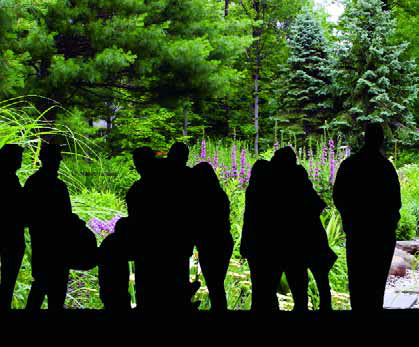ARTICLES
Advance Search
Aquatic Health
Aquatic Health, Fitness & Safety
Around the Internet
Aquatic Culture
Aquatic Technology
Artful Endeavors
Celebrity Corner
Life Aquatic
Must-See Watershapes
People with Cameras
Watershapes in the Headlines
Art/Architectural History
Book & Media Reviews
Commentaries, Interviews & Profiles
Concrete Science
Environment
Fountains
Geotechnical
Join the Dialogue
Landscape, Plants, Hardscape & Decks
Lighter Side
Ripples
Test Your Knowledge
The Aquatic Quiz
Other Waterfeatures (from birdbaths to lakes)
Outdoor Living, Fire Features, Amenities & Lighting
Plants
Ponds, Streams & Waterfalls
Pools & Spas
Professional Watershaping
Structures (Editor's Notes)
Travelogues & History
Water Chemistry
WaterShapes TV
WaterShapes World Blog
Web Links
Around the Internet
Aquatic Culture
Aquatic Technology
Artful Endeavors
Celebrity Corner
Life Aquatic
Must-See Watershapes
People with Cameras
Watershapes in the Headlines
I've seen many changes in the 38 years I've been installing vinyl-liner pools. When I started out, we worked mostly with wooden walls, and I even recall some made with asbestos. We always did our best, but I'll concede that in those early days the construction techniques were relatively unsophisticated. These days, we at The Pool & Spa Doctor (Wall, N.J.) work mostly with galvanized-steel construction and, in a smaller percentage of projects, with either modular polymer or fiberglass systems. We've been at it long enough in our market that, through the years, we've gone in and replaced many of the old wooden walls with modern modular systems - an experience that always drives home for us the fact that the
For a long time, I've studied a small lake that formed long ago in a natural bowl in Northern Wisconsin. It has about 20 acres of surface area and is now surrounded by a cow pasture and a cornfield. Holsteins graze right up to the water's edge and at times step into the lake to drink. Sometimes, cows being cows, their waste ends up in the water as well. On the opposite shore, the cornfield has an unusual configuration, with its furrows running straight down the slope and into the lake. When it rains or the fields are irrigated, some fertilizer inevitably washes into the lake. The stage is set for aquatic misery: Viscous, pea-soup mats of green algae and foul odors are the common results of this sort of nutrient loading. Indeed, few life forms other than algae survive in
For a long time, I've studied a small lake that formed long ago in a natural bowl in Northern Wisconsin. It has about 20 acres of surface area and is now surrounded by a cow pasture and a cornfield. Holsteins graze right up to the water's edge and at times step into the lake to drink. Sometimes, cows being cows, their waste ends up in the water as well. On the opposite shore, the cornfield has an unusual configuration, with its furrows running straight down the slope and into the lake. When it rains or the fields are irrigated, some fertilizer inevitably washes into the lake. The stage is set for aquatic misery: Viscous, pea-soup mats of green algae and foul odors are the common results of this sort of nutrient loading. Indeed, few life forms other than algae survive in
Custom watershapers need to understand materials. That's not a new message by any means, but the fact of the matter is that many of the watershapers I encounter have yet to fully embrace the vast range of material options available in today's marketplace. The reason for that is, I think, quite simple: Locating new materials and amassing a library of unique offerings for clients can be a full-time job unto itself. All too often, this makes it easier to rely on familiar sources and options instead of doing the work of finding new ones. I know from personal experience that the work can be
Custom watershapers need to understand materials. That's not a new message by any means, but the fact of the matter is that many of the watershapers I encounter have yet to fully embrace the vast range of material options available in today's marketplace. The reason for that is, I think, quite simple: Locating new materials and amassing a library of unique offerings for clients can be a full-time job unto itself. All too often, this makes it easier to rely on familiar sources and options instead of doing the work of finding new ones. I know from personal experience that the work can be
As watershape environments become increasingly integrated with homes and overall exterior spaces, increasing numbers of our clients are asking us for associated structures - everything from outdoor kitchens and dining areas to arbors, cabanas and pool houses. In my case, just about every single design I tackle includes one or more of these features. What this means is that we watershapers are effectively being drawn into the world of architecture. While we may not ultimately design or build these structures, at the very least we need to be familiar enough with their ins and outs that we can talk about them intelligently in the context of a given project. I've picked up a lot of basic knowledge through experience and close observation, but I recently decided to seek out a formal reference that would help me give definitive answers to a wide range of these questions, some as simple as inquiries about how much
As watershape environments become increasingly integrated with homes and overall exterior spaces, increasing numbers of our clients are asking us for associated structures - everything from outdoor kitchens and dining areas to arbors, cabanas and pool houses. In my case, just about every single design I tackle includes one or more of these features. What this means is that we watershapers are effectively being drawn into the world of architecture. While we may not ultimately design or build these structures, at the very least we need to be familiar enough with their ins and outs that we can talk about them intelligently in the context of a given project. I've picked up a lot of basic knowledge through experience and close observation, but I recently decided to seek out a formal reference that would help me give definitive answers to a wide range of these questions, some as simple as inquiries about how much
In my last two columns, I've gone to unusually length in describing my views of the design-preparation and presentation processes. This time, the subjects are more compact but, in practical terms, no less significant and vital: permits and contracts. We left the discussion last time at the point where I've shown my clients the design package and it's time for them to decide what to do. In most cases, they choose to build - the usual outcome for me because of the way I pre-qualified my clients and communicate clearly with them at every step of the way. In general, if you've done the right things to this point and the project reflects an informed knowledge of what is involved in
In my last two columns, I've gone to unusually length in describing my views of the design-preparation and presentation processes. This time, the subjects are more compact but, in practical terms, no less significant and vital: permits and contracts. We left the discussion last time at the point where I've shown my clients the design package and it's time for them to decide what to do. In most cases, they choose to build - the usual outcome for me because of the way I pre-qualified my clients and communicate clearly with them at every step of the way. In general, if you've done the right things to this point and the project reflects an informed knowledge of what is involved in
With spring upon us, calendars of local events are filling up with garden tours of all shapes and sizes. From large estate tours and special events at botanical gardens to tours of wonderful neighborhoods staged by local garden clubs, there's much to be seen while wandering through the grounds and yards and viewing the work of other designers and architects. I've always enjoyed these tours and learn something from each and every one, whether it's about a new plant or plant combination or an installation technique shared by a generous designer or installer who's on hand for that purpose. On a completely business note, I also have to say that some of my best-ever


















